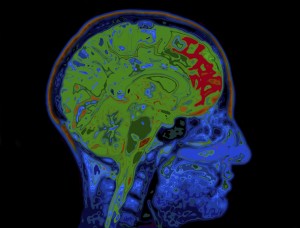

 Fibromyalgia pain and osteoarthritis are linked in how the brain experiences chronic pain. Osteoarthritis is a disease in which cartilage is worn down, allowing the bones of the joints to rub together. This can be quite painful and lead to stiffness and chronic pain. A condition with unknown causes, fibromyalgia also results in chronic pain and an increase in pain sensitivity.
Fibromyalgia pain and osteoarthritis are linked in how the brain experiences chronic pain. Osteoarthritis is a disease in which cartilage is worn down, allowing the bones of the joints to rub together. This can be quite painful and lead to stiffness and chronic pain. A condition with unknown causes, fibromyalgia also results in chronic pain and an increase in pain sensitivity.
Fibromyalgia and osteoarthritis may often be confused with one another due to the associated stiffness, sleep disturbances, and chronic pain, but they are two different diseases. It is important to note that at least 13 percent of osteoarthritis patients will suffer fibromyalgia as well.
The findings on the fibromyalgia pain and osteoarthritis link come from the Arthritis Research Facility in the U.K., revealing brain abnormalities and the link to chronic pain in osteoarthritis sufferers. The researchers concluded that there is a new form of therapy to target certain brain mechanisms that can help the mind cope with chronic pain.
Chronic pain can be grueling to deal with and it can negatively impact a person’s quality of life, so effective coping tactics can help improve one’s life and have them back at enjoying things they once loved.
The researchers focused on pain experienced in arthritis and fibromyalgia to determine the cause. They measured brain waves in osteoarthritis and fibromyalgia patients as well as in individuals without either disease. They found that there was increased activity in the insula cortex due to pain anticipation. They also noticed that pain anticipation was reduced in a part of the brain called the dorsolateral prefrontal cortex and, therefore, thought that they could develop a positive way of coping with pain through the brain.
The researchers suggest that body perception and emotional processing could explain what was occurring in the insula cortex. They concluded that by controlling this area they could have better control over pain.
Researcher Dr. Christopher Brown explained, “We think that boosting activity either directly or indirectly in this area of the brain is likely to result in better coping and better control of pain responses in other areas of the brain.”
Although osteoarthritis and fibromyalgia cause chronic pain, which may hinder a person’s ability to perform certain tasks or to be physically active, exercise is actually recommended to help relieve pain. If you are just beginning, the pain may seem too intense and you may believe that it will only get worse with the exercise, but as you become stronger the pain will subside and you will notice you are in less pain.
To begin your osteoarthritis and fibromyalgia exercise program, start with range of motion exercises and try to move each joint to its full range of motion capacity. You may also opt to perform exercises in a pool or to simply go for walks. Using a bicycle in the beginning is fine, but avoid a Stairmaster or running at first. Your goal is to get your blood flowing and your heart rate up safely.
After about a month, you can add weight training to your routine, beginning with light weights and light repetitions, and working your way up.
A general rule is, if a motion is painful simply stop or modify it so it is not causing you pain. It’s important to note that feeling sore for a few days afterwards is normal and it is not an indication that exercise is bad for your condition. If pain increases and lasts for quite some time, you may have to modify your fitness program.
Copyright © www.orthopaedics.win Bone Health All Rights Reserved